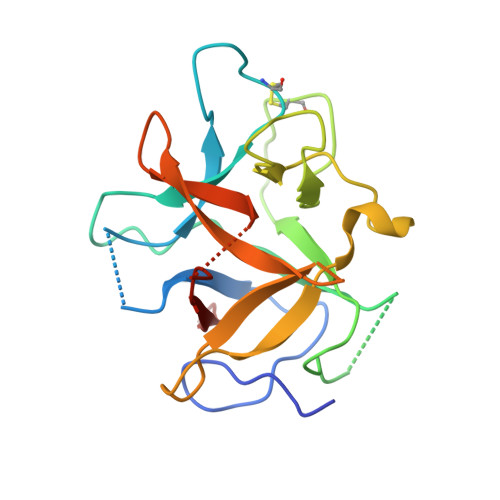How water-mediated hydrogen bonds affect chlorophyll a/b selectivity in Water-Soluble Chlorophyll Protein.
Agostini, A., Meneghin, E., Gewehr, L., Pedron, D., Palm, D.M., Carbonera, D., Paulsen, H., Jaenicke, E., Collini, E.(2019) Sci Rep 9: 18255-18255
- PubMed: 31796824
- DOI: https://doi.org/10.1038/s41598-019-54520-4
- Primary Citation of Related Structures:
6S2Y, 6S2Z - PubMed Abstract:
The Water-Soluble Chlorophyll Protein (WSCP) of Brassicaceae is a remarkably stable tetrapyrrole-binding protein that, by virtue of its simple design, is an exceptional model to investigate the interactions taking place between pigments and their protein scaffold and how they affect the photophysical properties and the functionality of the complexes. We investigated variants of WSCP from Lepidium virginicum (Lv) and Brassica oleracea (Bo), reconstituted with Chlorophyll (Chl) b, to determine the mechanisms by which the different Chl binding sites control their Chl a/b specificities. A combined Raman and crystallographic investigation has been employed, aimed to characterize in detail the hydrogen-bond network involving the formyl group of Chl b. The study revealed a variable degree of conformational freedom of the hydrogen bond networks among the WSCP variants, and an unexpected mixed presence of hydrogen-bonded and not hydrogen-bonded Chls b in the case of the L91P mutant of Lv WSCP. These findings helped to refine the description of the mechanisms underlying the different Chl a/b specificities of WSCP versions, highlighting the importance of the structural rigidity of the Chl binding site in the vicinity of the Chl b formyl group in granting a strong selectivity to binding sites.
Organizational Affiliation:
Department of Chemical Sciences, University of Padova, via Marzolo 1, 35131, Padova, Italy. alessandro.agostini.1@unipd.it.















